Here is the Freebsd manpage for the newfs command:
NEWFS(8) FreeBSD System Manager's Manual NEWFS(8) NAME newfs -- construct a new UFS1/UFS2 file system SYNOPSIS newfs [-EJNUjlnt] [-L volname] [-O filesystem-type] [-S sector-size] [-T disktype] [-a maxcontig] [-b block-size] [-c blocks-per-cylinder-group] [-d max-extent-size] [-e maxbpg] [-f frag-size] [-g avgfilesize] [-h avgfpdir] [-i bytes] [-k held-for-metadata-blocks] [-m free-space] [-o optimization] [-p partition] [-r reserved] [-s size] special DESCRIPTION The newfs utility is used to initialize and clear file systems before first use. The newfs utility builds a file system on the specified spe- cial file. (We often refer to the ``special file'' as the ``disk'', although the special file need not be a physical disk. In fact, it need not even be special.) Typically the defaults are reasonable, however newfs has numerous options to allow the defaults to be selectively over- ridden. The following options define the general layout policies: -E Erase the content of the disk before making the filesystem. The reserved area in front of the superblock (for bootcode) will not be erased. This option is only relevant for flash based storage devices that use wear-leveling algorithms. Erasing may take a long time as it writes to every sector on the disk. -J Enable journaling on the new file system via gjournal. See gjournal(8) for details. -L volname Add a volume label to the new file system. -N Cause the file system parameters to be printed out without really creating the file system. -O filesystem-type Use 1 to specify that a UFS1 format file system be built; use 2 to specify that a UFS2 format file system be built. The default format is UFS2. -T disktype For backward compatibility. -U Enable soft updates on the new file system. -a maxcontig Specify the maximum number of contiguous blocks that will be laid out before forcing a rotational delay. The default value is 16. See tunefs(8) for more details on how to set this option. -b block-size The block size of the file system, in bytes. It must be a power of 2. The default size is 32768 bytes, and the smallest allow- able size is 4096 bytes. The optimal block:fragment ratio is 8:1. Other ratios are possible, but are not recommended, and may produce poor results. -c blocks-per-cylinder-group The number of blocks per cylinder group in a file system. The default is to compute the maximum allowed by the other parame- ters. This value is dependent on a number of other parameters, in particular the block size and the number of bytes per inode. -d max-extent-size The file system may choose to store large files using extents. This parameter specifies the largest extent size that may be used. The default value is the file system blocksize. It is presently limited to a maximum value of 16 times the file system blocksize and a minimum value of the file system blocksize. -e maxbpg Indicate the maximum number of blocks any single file can allo- cate out of a cylinder group before it is forced to begin allo- cating blocks from another cylinder group. The default is about one quarter of the total blocks in a cylinder group. See tunefs(8) for more details on how to set this option. -f frag-size The fragment size of the file system in bytes. It must be a power of two ranging in value between blocksize/8 and blocksize. The default is 4096 bytes. -g avgfilesize The expected average file size for the file system. -h avgfpdir The expected average number of files per directory on the file system. -i bytes Specify the density of inodes in the file system. The default is to create an inode for every (2 * frag-size) bytes of data space. If fewer inodes are desired, a larger number should be used; to create more inodes a smaller number should be given. One inode is required for each distinct file, so this value effectively specifies the average file size on the file system. -j Enable soft updates journaling on the new file system. This flag is implemented by running the tunefs(8) utility found in the user's $PATH. -k held-for-metadata-blocks Set the amount of space to be held for metadata blocks in each cylinder group. When set, the file system preference routines will try to save the specified amount of space immediately fol- lowing the inode blocks in each cylinder group for use by meta- data blocks. Clustering the metadata blocks speeds up random file access and decreases the running time of fsck(8). By default newfs sets it to half of the space reserved to minfree. -l Enable multilabel MAC on the new file system. -m free-space The percentage of space reserved from normal users; the minimum free space threshold. The default value used is defined by MINFREE from <ufs/ffs/fs.h>, currently 8%. See tunefs(8) for more details on how to set this option. -n Do not create a .snap directory on the new file system. The resulting file system will not support snapshot generation, so dump(8) in live mode and background fsck(8) will not function properly. The traditional fsck(8) and offline dump(8) will work on the file system. This option is intended primarily for memory or vnode-backed file systems that do not require dump(8) or fsck(8) support. -o optimization (space or time). The file system can either be instructed to try to minimize the time spent allocating blocks, or to try to mini- mize the space fragmentation on the disk. If the value of min- free (see above) is less than 8%, the default is to optimize for space; if the value of minfree is greater than or equal to 8%, the default is to optimize for time. See tunefs(8) for more details on how to set this option. -p partition The partition name (a..h) you want to use in case the underlying image is a file, so you do not have access to individual parti- tions through the filesystem. Can also be used with a device, e.g., newfs -p f /dev/da1s3 is equivalent to newfs /dev/da1s3f. -r reserved The size, in sectors, of reserved space at the end of the parti- tion specified in special. This space will not be occupied by the file system; it can be used by other consumers such as geom(4). Defaults to 0. -s size The size of the file system in sectors. This value defaults to the size of the raw partition specified in special less the reserved space at its end (see -r). A size of 0 can also be used to choose the default value. A valid size value cannot be larger than the default one, which means that the file system cannot extend into the reserved space. -t Turn on the TRIM enable flag. If enabled, and if the underlying device supports the BIO_DELETE command, the file system will send a delete request to the underlying device for each freed block. The trim enable flag is typically set when the underlying device uses flash-memory as the device can use the delete command to pre-zero or at least avoid copying blocks that have been deleted. The following options override the standard sizes for the disk geometry. Their default values are taken from the disk label. Changing these defaults is useful only when using newfs to build a file system whose raw image will eventually be used on a different type of disk than the one on which it is initially created (for example on a write-once disk). Note that changing any of these values from their defaults will make it impos- sible for fsck(8) to find the alternate superblocks if the standard superblock is lost. -S sector-size The size of a sector in bytes (almost never anything but 512). EXAMPLES newfs /dev/ada3s1a Creates a new ufs file system on ada3s1a. The newfs utility will use a block size of 32768 bytes, a fragment size of 4096 bytes and the largest possible number of blocks per cylinders group. These values tend to pro- duce better performance for most applications than the historical defaults (8192 byte block size and 1024 byte fragment size). This large fragment size may lead to much wasted space on file systems that contain many small files. SEE ALSO fdformat(1), geom(4), disktab(5), fs(5), camcontrol(8), dump(8), dumpfs(8), fsck(8), gpart(8), gjournal(8), growfs(8), gvinum(8), makefs(8), mount(8), tunefs(8) M. McKusick, W. Joy, S. Leffler, and R. Fabry, "A Fast File System for UNIX", ACM Transactions on Computer Systems 2, 3, pp 181-197, August 1984, (reprinted in the BSD System Manager's Manual).-
Blank and Burn ISO Freebsd
Scheduled Pinned Locked Moved FreeBSD Notes cd0 camcontrol command line freebsd growisofs dvd+rw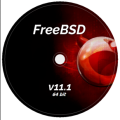 +0
0 Votes1 Posts684 Views
+0
0 Votes1 Posts684 Views -
Format USB device under FreeBSD
Scheduled Pinned Locked Moved FreeBSD Notes camcontrol format usb command line freebsd newfs +0
0 Votes2 Posts891 Views
+0
0 Votes2 Posts891 Views
-
 R
R
Screen recording can use webm as their format, it can be more simple to use a gif to embed into a website or forum, than adding scripts to host different video format.
In this case I grabbed a screen record of the progress for writing zeros to a hard drive with dd
Use ffmpeg to convert webm to gif:
First create a pallet:
Move into the directory which the webm is located, or type in the path
Where ‘dd.webm’ is the screen recording
ffmpeg -y -i dd.webm -vf palettegen palette.pngOutput:
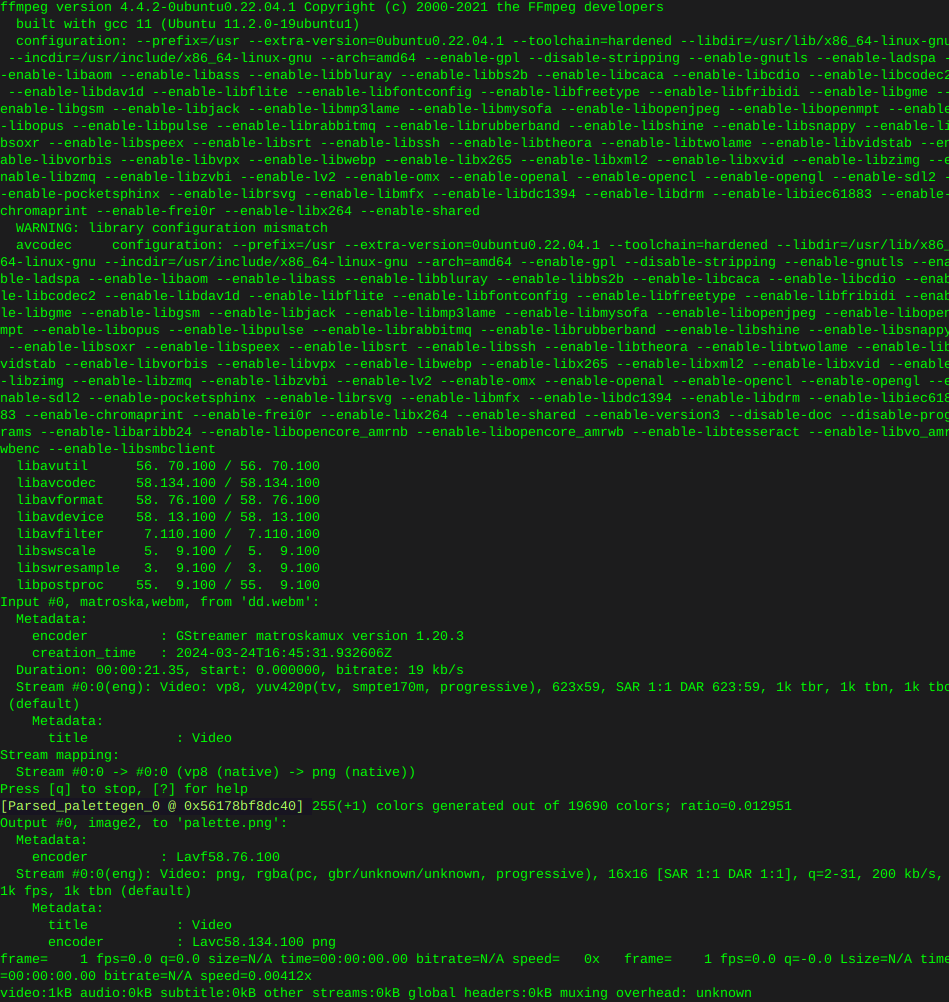
Then convert the webm to gif:
ffmpeg -y -i dd.webm -i palette.png -filter_complex paletteuse -r 10 dd.gif
This is what I ended up with, looks like any image of any alien on the interwebz, as if shot through a potato, some tweaking of the command is in my future. None the less.

-
 R
R
Write zeros to all sectors
Use the command ‘lsblk’ to find the drive you wish to erase
I’m using ‘dd’ to erase things
In this case I’m torching sdb
Only use status=progress if you care it’s not necessary
dd if=/dev/zero of=/dev/sdb bs=12M status=progress
-
 R
R
Remove old kernel images that are cluttering the system
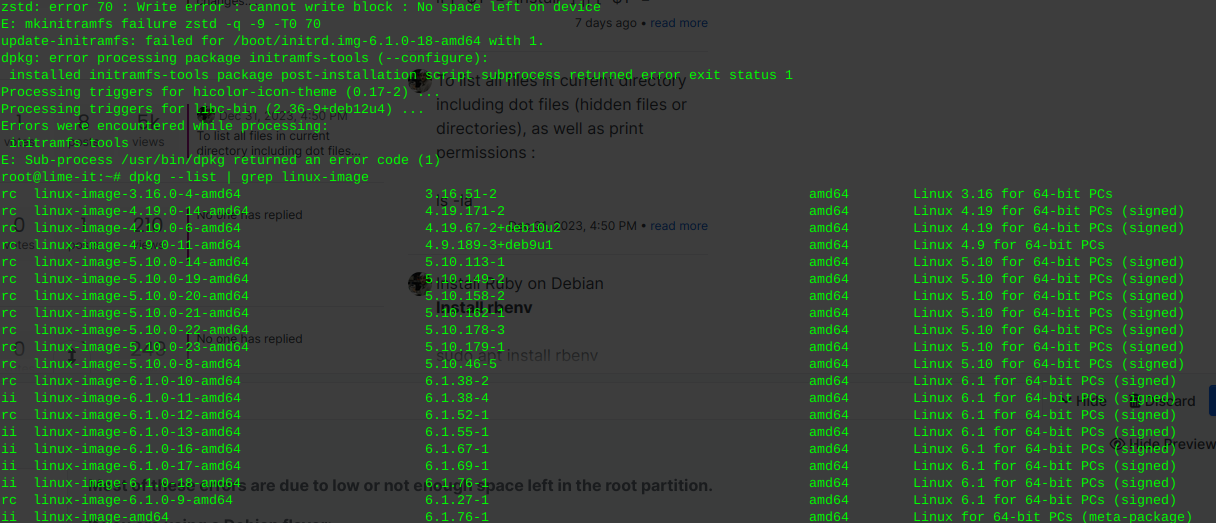
Most of these errors are due to low or not enough space left in the root partition.
If you are using a Debian flavor:
sudo apt-get autoremove --purge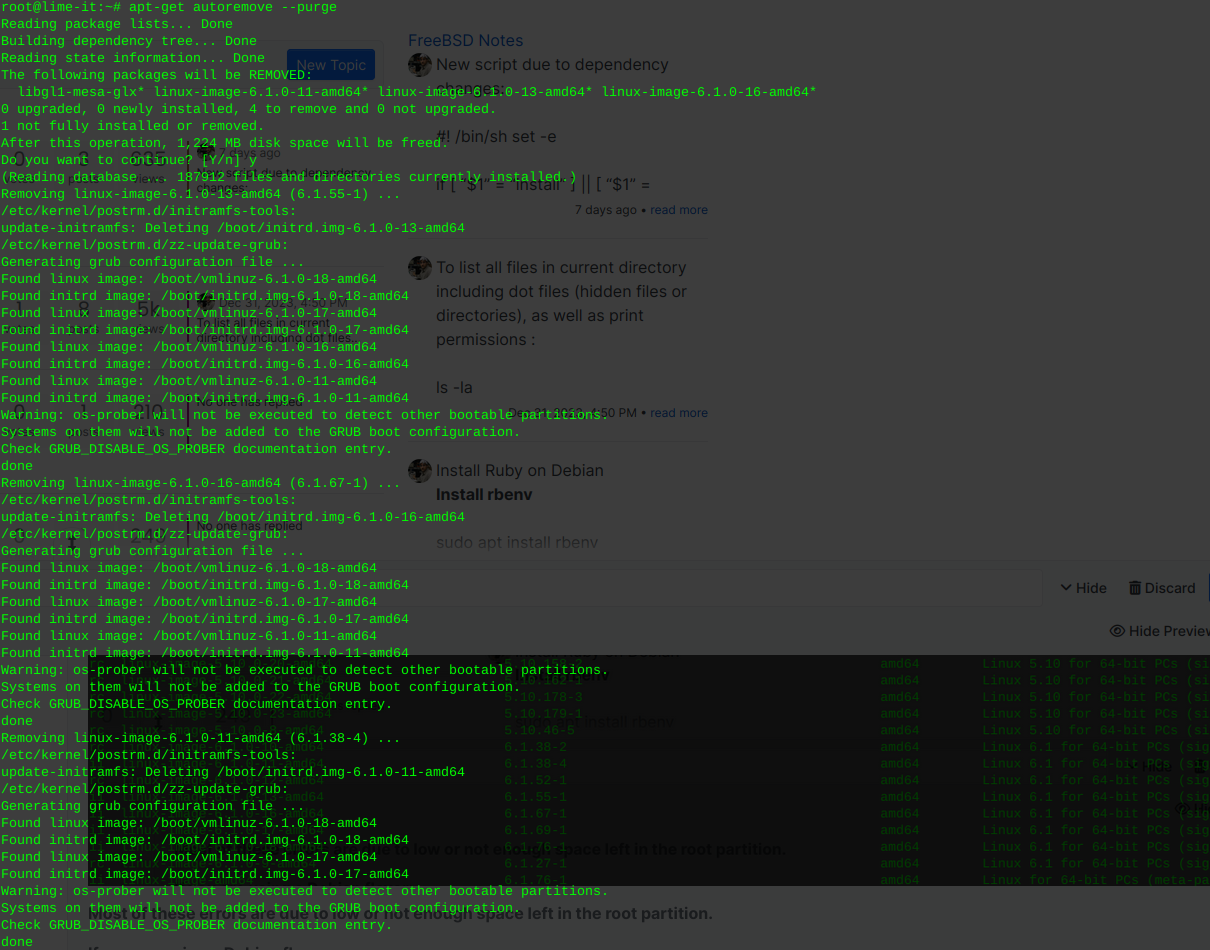
Inform grub whenever an old kernel is removed:
update grub
Remove the un-used kernel config files:
These will be the files pre cursed as ‘rc’ where installed kernels use ‘ii’
… As well as files no longer used or required due to dependencies
This command will detect, print, and remove left over cruft from previously installed packages or scripts, that have been removed or updated.
sudo dpkg --purge $(dpkg -l | awk '/^rc/{print $2}')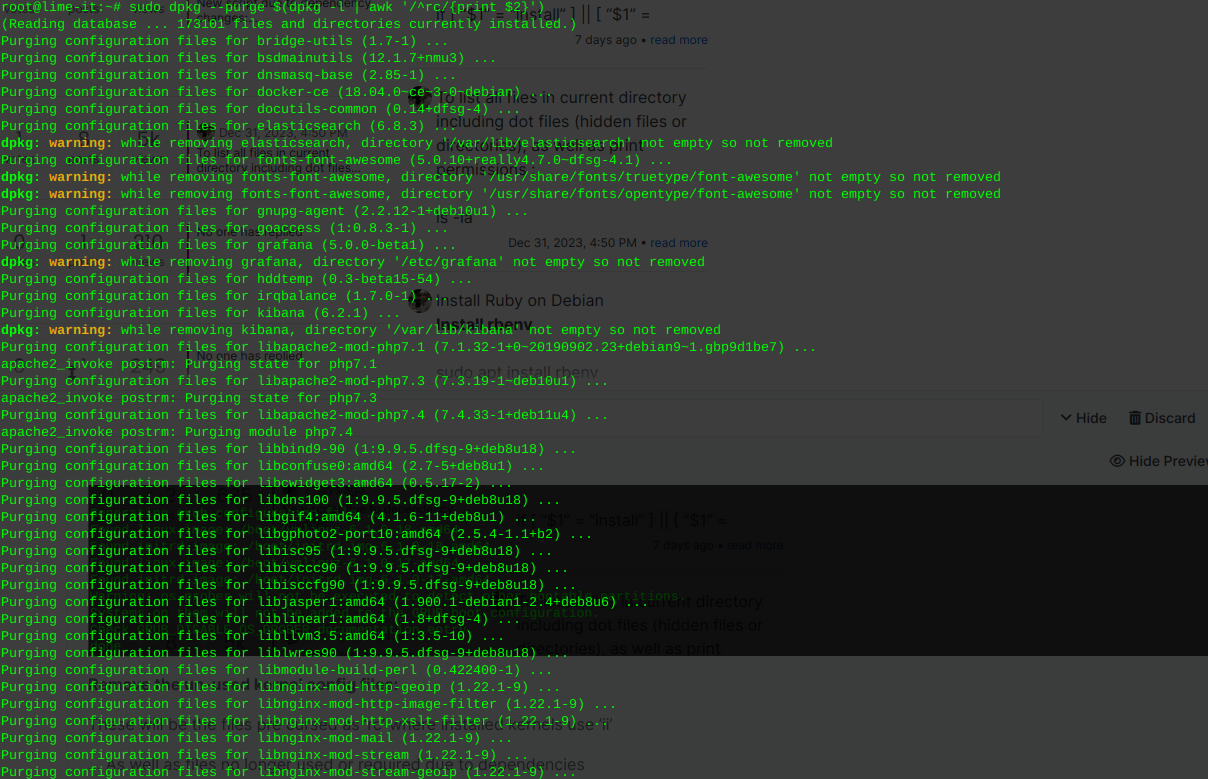
You can re-run the following to view the installed kernel(s):
dpkg --list | grep linux-image
-
 R
R
New script due to dependency changes:
#! /bin/sh set -e
if [ “$1” = “install” ] || [ “$1” = “upgrade” ]; then
ACTION=$1
elif [ “$1” = “” ]; then ACTION=install else echo “usage: $(basename $0) action [source]” echo “action is either install (default) or upgrade” echo “source is either tar (default) or git” exit 1 fi
if [ “$2” = “git” ] || [ “$2” = “tar” ]; then SOURCE=$2 elif [ “$2” = “” ]; then SOURCE=tar else echo “Unknown source $2!” exit 1 fi
if [ “$BPC_UID” ] && [ $(getent passwd “$BPC_UID” | cut -d ‘:’ -f 1) != “backuppc” ]; then echo “The uid = $BPC_UID is already in use!” exit 1 fi
#Install dependencies
apt-get -q update export DEBIAN_FRONTEND=noninteractive apt-get install -q -y apache2 apache2-utils libapache2-mod-perl2 par2 perl smbclient rsync tar gcc zlib1g zlib1g-dev rrdtool git make perl-doc libarchive-zip-perl libfile-listing-perl libxml-rss-perl libcgi-session-perl libacl1-dev wget iputils-ping pwgen
#Set up backuppc user and directory
if ! id backuppc >/dev/null 2>&1; then if [ “$BPC_UID” ]; then adduser --system --home /var/lib/backuppc --group --disabled-password --shell /bin/false --uid=“$BPC_UID” backuppc else adduser --system --home /var/lib/backuppc --group --disabled-password --shell /bin/false backuppc fi fi mkdir -p /var/lib/backuppc/.ssh chmod 700 /var/lib/backuppc/.ssh echo -e “BatchMode yes\nStrictHostKeyChecking no” > /var/lib/backuppc/.ssh/config if [ ! -e /var/lib/backuppc/.ssh/id_rsa ]; then ssh-keygen -q -t rsa -b 4096 -N ‘’ -C “BackupPC key” -f /var/lib/backuppc/.ssh/id_rsa fi chmod 600 /var/lib/backuppc/.ssh/id_rsa chmod 644 /var/lib/backuppc/.ssh/id_rsa.pub chown -R backuppc:backuppc /var/lib/backuppc/.ssh
#Set password or read password file
if [ “$BPC_PASS” ]; then PASSWORD=“$BPC_PASS” elif [ -e /root/password ]; then PASSWORD=$(cat /root/password) chmod 600 /root/password else PASSWORD=$(pwgen -s -1 32) echo “$PASSWORD” > /root/password chmod 600 /root/password fi echo “backuppc:$PASSWORD” | chpasswd backuppc
#Get BackupPC release versions
get_latest_release() { wget -q -O - “https://api.github.com/repos/$1/releases/latest” | grep ‘“tag_name”:’ | sed -E ‘s/.“([^”]+)"./\1/’
} bpcver=$(get_latest_release “backuppc/backuppc”) bpcxsver=$(get_latest_release “backuppc/backuppc-xs”) rsyncbpcver=$(get_latest_release “backuppc/rsync-bpc”)mkdir -p /tmp/bpc cd /tmp/bpc
if [ $SOURCE = “tar” ]; then
##Fetch and install latest stable releases
wget https://github.com/backuppc/backuppc-xs/releases/download/$bpcxsver/BackupPC-XS-$bpcxsver.tar.gz wget https://github.com/backuppc/rsync-bpc/releases/download/$rsyncbpcver/rsync-bpc-$rsyncbpcver.tar.gz wget https://github.com/backuppc/backuppc/releases/download/$bpcver/BackupPC-$bpcver.tar.gz tar -zxf BackupPC-XS-$bpcxsver.tar.gz tar -zxf rsync-bpc-$rsyncbpcver.tar.gz tar -zxf BackupPC-$bpcver.tar.gz cd BackupPC-XS-$bpcxsver perl Makefile.PL make make test make install cd …/rsync-bpc-$rsyncbpcver ./configure make make install cd …/BackupPC-$bpcver fi
if [ $SOURCE = “git” ]; then
#Fetch and install the latest development code instead
git clone https://github.com/backuppc/backuppc.git git clone https://github.com/backuppc/backuppc-xs.git git clone https://github.com/backuppc/rsync-bpc.git cd backuppc-xs perl Makefile.PL make make test make install cd …/rsync-bpc ./configure make make install cd …/backuppc ./makeDist --nosyntaxCheck --releasedate “date -u "+%d %b %Y"” --version ${bpcver}git tar -zxf dist/BackupPC-${bpcver}git.tar.gz cd BackupPC-${bpcver}git fi
if [ $ACTION = “install” ]; then ./configure.pl --batch --cgi-dir /var/www/cgi-bin/BackupPC --data-dir /var/lib/backuppc --hostname backuppc --html-dir /var/www/html/BackupPC --html-dir-url /BackupPC --install-dir /usr/local/BackupPC fi
if [ $ACTION = “upgrade” ]; then ./configure.pl --batch --config-path /etc/BackupPC/config.pl fi
#Set up web server #Note that changing the apache user and group (/etc/apache2/envvars) could cause other services #provided by apache to fail. There are alternatives if you don’t want to change the apache #user: use SCGI or a setuid BackupPC_Admin script - see the docs. cp httpd/BackupPC.conf /etc/apache2/conf-available/backuppc.conf sed -i “/Require local/d” /etc/apache2/conf-available/backuppc.conf sed -i “s/export APACHE_RUN_USER=www-data/export APACHE_RUN_USER=backuppc/” /etc/apache2/envvars sed -i “s/export APACHE_RUN_GROUP=www-data/export APACHE_RUN_GROUP=backuppc/” /etc/apache2/envvars echo ‘’ > /var/www/html/index.html a2enconf backuppc a2enmod cgid service apache2 restart
#Set up backuppc service
cp systemd/init.d/debian-backuppc /etc/init.d/backuppc
chmod 755 /etc/init.d/backuppc
update-rc.d backuppc defaults
chmod u-s /var/www/cgi-bin/BackupPC/BackupPC_Admin
touch /etc/BackupPC/BackupPC.users
sed -i “s/$Conf{CgiAdminUserGroup}.*/$Conf{CgiAdminUserGroup} = ‘backuppc’;/” /etc/BackupPC/config.pl
sed -i “s/$Conf{CgiAdminUsers}.*/$Conf{CgiAdminUsers} = ‘backuppc’;/” /etc/BackupPC/config.pl
chown -R backuppc:backuppc /etc/BackupPC
echo $PASSWORD | htpasswd -i /etc/BackupPC/BackupPC.users backuppc
service backuppc start
#Clean up
cd rm -rf /tmp/bpc echo “All done!” exit 0
-
 R
R
To list all files in current directory including dot files (hidden files or directories), as well as print permissions :
ls -la
